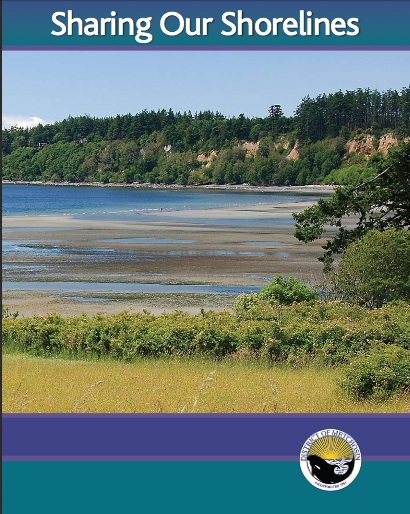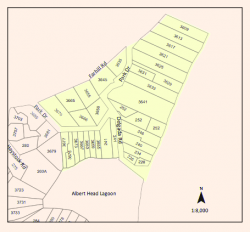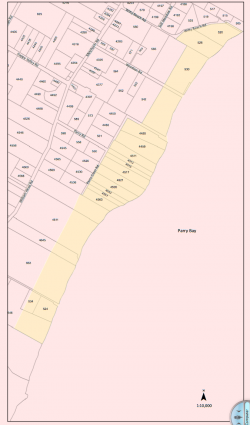Documents Presented in the past to Metchosin Council
There is a history of concern about the values associated with the coastal part of Metchosin, the following examples illustrate this.
From the Official Community Plan of Metchosin, the following references pertain to Marine Shorelands.
Section 2.6 MARINE SHORELANDS:
Definition: Within Metchosin, there are Rocky Shores, Drift Sector Beaches, Pocket Beaches, Low- Energy Shores and Lagoon Ecosystems, as shown on Marine Shorelands, Map 5. In addition, the two types of beaches are further categorized into three distinct classes of beach based on the accretion and erosion characteristics. The combinations of shore categories and distinct beach classes produce a diverse range of marine shorelands. Most of the geotechnical and environmental concerns about shores relate to the processes of drift and accretion along the shore and the process of slope regression above the shores.
(a) General Marine Shoreland Policies:
2.6.1 The District of Metchosin may give consideration to the following:
. (1) discuss with senior levels of government for coordinating future land use policies as they pertain to the management of Metchosin’s marine shorelands.
. (2) monitor shore processes with particular concern for slope regression rates,lateral drift rate and stability of Class I accretion beaches.
. (3) determine,in conjunction with the Ministry of Environment, Lands and Parks, ways and means of undertaking:
(a) where desirable and feasible, a program of beach stabilization using natural nonstructural techniques, such as the planting of dune grasses where appropriate;
(b) beach enhancement programs wherever it is possible to upgrade a Class II beach to a Class I beach (see Definitions of beaches); and
(c) the removal or reduction of development intrusions not consistent with the maintenance of the shoreline.
2.6.2. The set back requirements specified in this Section may be increased as local conditions warrant.
2.6.3 The improvement of public access should be ensured in the course of land development where such access is not detrimental to Sensitive Environments.
2.6.4 Any desired works to be placed on foreshore lands from the mean high water mark seaward requires application to the appropriate provincial and/or federal government agency responsible.
2.6.5 Public recreational use of marine shorelands should be consistent with the suitability of each shore type for the proposed use.
(b) Rocky Shores:
Definition: Rocky shores are stable shores comprised of exposed bedrock with an absence of unconsolidated material at extreme low tide. Relative to other types of shores, they are low in biological productivity but rich in biotic diversity and aesthetic quality and are characterized by lichens, snails, barnacles, mussels, seaweeds, anemones and sea stars.
. 2.6.6 No building or structure shall be located and no fill shall be placed or removed from any site within 15 horizontal metres (50 feet) of mean high water on Rocky Shore slopes except where engineering and resource management studies indicate that a lesser setback is acceptable.
. 2.6.7 Although the biological capability of Rocky Shore slopes to support life is relatively low, the natural biota may provide habitat for rare species of animal life and that value should be considered with each development proposed.
(c) Drift-Sector Beaches:
Definition: A Drift-Sector is an integrated and independently operating erosion beach system which may extend for many miles in length and be separated from adjacent drift-sectors by either natural or artificial boundaries. Metchosin contains one large drift-sector extending from Weir Beach to Witty’s Lagoon. A drift-sector generally contains the following three classes of beaches:
Class III Beaches are erosional beaches located at the base of coastal bluffs or cliffs from which sand and gravel is provided for accretion of Class I beaches further along the drift-sector. Class III beaches are totally submerged at high tide with no dry backshore berm.
Class II Beaches are marginal erosion beaches located at the base of coastal bluffs or cliffs from which sand and gravel is eroded providing a secondary source of beach material for accretion on Class I beaches further along the drift-sector. Class II beaches are largely submerged at high tide with only a limited amount of walkable dry backshore under such conditions.
– 15 –
Class I Beaches are the accretion terminals of a drift-sector where material eroded from Class II and III beaches is deposited. Class I beaches remain dry and walkable at high tide and have a large backshore berm permitting ease of public access and use. They constitute the most important recreational beaches. Biotically, beach shores are of intermediate productivity and diversity relative to the other shore types.
. 2.6.8 The use and management of the Drift-Sector Beaches should be based on the maintenance of the present natural system of erosion, transport and build up of beach material along the length of the Drift-Sector designated on Map 5.
. 2.6.9 Because the existence and maintenance of the Class I beaches are dependent on the supply of material eroded from Class II and III beaches, no bulkheading or placement of any shore protection structures will be permitted within a drift-sector except where engineering and resource management studies indicate otherwise.
. 2.6.10 To ensure that material eroded from Class II and III beaches is transported the full length of the shoreline to Class I beaches, docking or other facilities which impede the natural processes will not be permitted within drift-sectors.
. 2.6.11 Due to active slope recession with considerable sloughing and slide evidence, no building or structure will be permitted within a minimum of 60 horizontal metres (200 feet) from mean high water adjacent to Class II and Class III drift-sector beaches except where geotechnical engineering and resource management studies indicate a lesser setback is acceptable.
. 2.6.12 On the slopes adjacent to Drift Sector Beaches, no material of any kind shall be removed within a minimum of 60 horizontal metres (200 feet) landward of mean high water.
. 2.6.13 The location of the mean high water mark and the establishing of setbacks from Class II and Class III slopes should be reviewed at 5 year intervals, or as required, to determine if slope regression has placed residences at risk.
(d) Pocket Beaches:
Definition: A Pocket Beach is a sand and gravel beach along which no lateral drift of beach material takes place because it is contained between two headlands. The Pocket Beach is formed by the onshore and offshore movement of material. Pocket beaches are generally between 30.5 metres (100 feet) and 91.5 metres (300 feet) in length.
With Pocket Beaches, as with Drift-Sector Beaches, there are three classes. However, unlike the classes of Drift-Sector Beaches which are contained adjacent to one another within the Drift- Sector. Each class of Pocket Beach exists independently.
Class III Beaches are erosional beaches located at the base of coastal bluffs or cliffs with no dry backshore berm. Such beaches are totally submerged at high tide.
– 16 –
Class II Beaches are marginal erosion beaches located at the base of coastal bluffs or cliffs that supply the upper foreshore with a fairly heavy drift berm without creating a stable dry backshore zone above high tide.
Class I Beaches are rollback pocket beaches characterized by a backshore wetted only under extreme tide and wave conditions permitting ease of public access and use. They constitute the most important recreational class of beach.
. 2.6.14 No building or structure shall be located and no fill shall be placed or removed from any site within 15 horizontal metres (50 feet) of mean high water adjacent to Class I and Class II pocket beaches except where engineering and resource management studies indicate that a lesser setback is acceptable.
. 2.6.15 Because Class III pocket beaches are located at the base of cliffs which are subject to erosion, no building or structure, no placing or removal of fill or other material will be permitted within 15 horizontal metres (50 feet) landward of mean high water adjacent to Class III pocket beaches.
. 2.6.16 No bulkheading or placement of any shore protection structures will be permitted on Class I, Class II or Class III pocket beaches except where engineering and resource management studies indicate otherwise.
(e) Low-EnergyShoreZone
Definition: Low-Energy Shores are estuarine shores which form part or all of a cove or inlet. They may be characterized by marshy shores, shallow and muddy foreshores, and generally having low banks. As with Pocket Beaches, there are three classes of Low-Energy Shores each existing independently. However, in Metchosin, there is only one Low-Energy Shore – entirely a Class III (erosional) located at the head of Pedder Inlet.
Similar to a Lagoon Ecosystem, the estuarine shore also provides a unique biological environment. Fresh-water creeks and streams flowing into the cove or inlet offer rather unusual habitat. There is currently insufficient information available relating to the protection and preservation of the Low-Energy Shore zones. Therefore, further research is recommended.
. 2.6.17 No building or structure shall be located and no fill shall be placed or removed from any site within 15 horizontal meters (50) feet of mean high water adjacent to the Low-Energy Shore, except where engineering and resource management studies indicated that a lesser setback is acceptable.
. 2.6.18 No bulkheading or placement of any shore protection structures will be permitted on a Low- Energy Shore except where engineering and resource management studies indicate otherwise.
– 17 –
(f) Lagoon Ecosystems:
Definition: The central component of a Lagoon Ecosystem is a body of salt water which has been cut off from the ocean by a barrier or spit of land and which allows the formation of a sheltered biological environment. This unique environment frequently includes a salt-water marsh and estuarine area into which flows fresh water from upland creeks and streams. This combination of fresh and salt water has very high biological productivity and diversity. It offers significant aesthetic and habitat attributes.
2.6.19 Only such uses as limited agriculture and low intensity recreational uses, which do not require structural intrusion, will be permitted in Lagoon Ecosystems.




